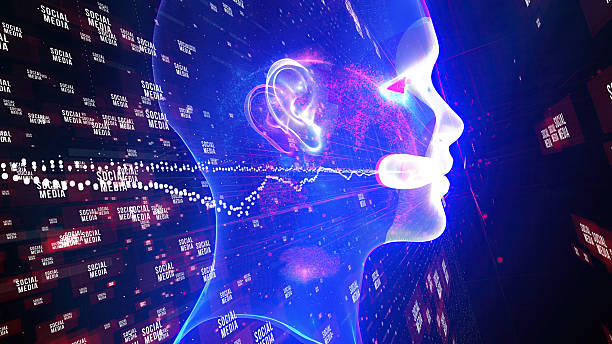What is On-Page SEO? Its Importance for Your Website
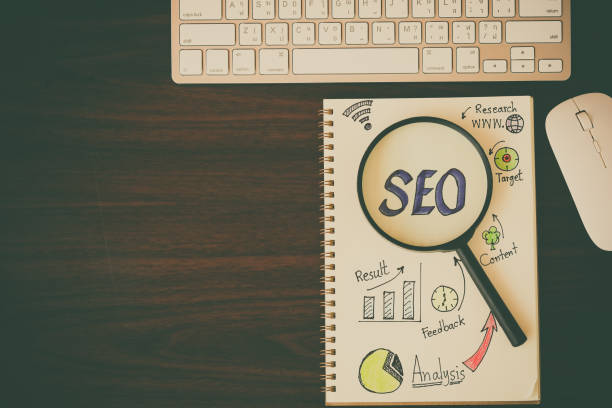
In today’s highly competitive web world, an online presence isn’t just about having a website; it’s about being seen in search results.
This is where the concept of #On-Page_SEO or Internal Search Engine Optimization comes in.
On-page SEO refers to a set of actions performed within your website to make it more understandable and appealing to search engines.
These actions include optimizing site structure, content, HTML code, and internal technical elements.
Unlike off-page SEO, which focuses on backlinks and off-site activities, on-page SEO gives you complete control over processes and results.
The main goal of this section is educational and explanatory, to provide a deeper understanding of this concept.
The importance of on-page SEO for a website is undeniable; without it, even the highest quality content might get lost among a flood of information and never reach its target audience.
Search engines like Google use complex algorithms to crawl websites and provide the most relevant and useful results to users.
On-page SEO helps your website send these positive signals to search engines, thereby achieving a better ranking and attracting more organic traffic.
In fact, this process forms the foundation of every successful SEO strategy.
Paying attention to on-page SEO principles not only improves your site’s visibility but also enhances user experience, as optimized sites typically have faster loading speeds and offer easier navigation.
Losing potential customers due to an unprofessional website? Rasawweb is your answer! With our specialized corporate website design services:
✅ Enhance your business’s credibility and standing
✅ Experience attracting more targeted customers
⚡ Act now to get a free consultation!
Keyword Research: The Foundation of Successful On-Page SEO

One of the first and most crucial steps in the on-page SEO journey is #Keyword_Research.
This process involves finding words and phrases that users employ when searching for information, products, or services related to your business.
Effective keyword research provides your roadmap for creating targeted content and optimizing pages.
Without correctly identifying relevant keywords, your on-page SEO efforts might be fruitless.
For specialized guidance in this area, you should refer to tools like Google Keyword Planner, Ahrefs, Semrush, and Moz Keyword Explorer.
These tools help you analyze search volume, competition level, and the relevance of various keywords.
Selecting appropriate keywords for on-page SEO must be done carefully; both shorter, more general keywords (like “buy laptop”) and longer, more specific keywords (like “cheap gaming laptop with RTX 3060 graphics card”) are important.
Long-tail keywords usually have less traffic but offer higher conversion rates, as the user’s intent is clearer in them.
Also, you should use keywords naturally in your content without overdoing it.
Excessive use of keywords (Keyword Stuffing) not only won’t help your on-page SEO but might also result in penalties from search engines.
The goal of this section is to provide a comprehensive guide for selecting and using keywords to build a strong foundation for your on-page SEO strategy.
A deep understanding of user search intent and aligning your content with it is the key to success at this stage.
Optimizing Tags and Content Structure

Optimizing the internal elements of your web pages, including tags and content structure, is one of the main pillars of on-page SEO.
These elements help search engines better understand your page’s content and index it correctly.
The most important of these tags include #Meta_Title, #Meta_Description, and #Heading_Tags (H1 to H6).
The meta title is the title displayed in the browser tab and search results, and it should contain the page’s main keyword and be appealing to increase the click-through rate (CTR).
The meta description is a short summary of the page’s content that appears below the title in search results; although it doesn’t directly influence rankings, it plays a significant role in attracting users to click.
Using heading tags (H1, H2, H3, etc.) is essential for organizing content and specifying its hierarchy.
H1 should be used for the main title of the page and appear only once per page, while H2 and H3 are used for subheadings and content segmentation.
This structure not only improves content readability for users but also helps search engines identify different sections and main topics of the page.
An analysis of competitors and their use of these tags can provide valuable ideas for your on-page SEO.
Ensure that each page has a unique title and an attractive meta description that includes relevant keywords.
These steps are vital for any successful on-page SEO strategy.
| Element | Recommended Maximum Length (pixels) | Description |
|---|---|---|
| Meta Title | 600 pixels (approx. 50-60 characters) | The title of your page in search results and browser tab. Should include the main keyword. |
| Meta Description | 920 pixels (approx. 150-160 characters) | A summary of your page in search results. Should encourage users to click. |
Producing High-Quality and Relevant Content
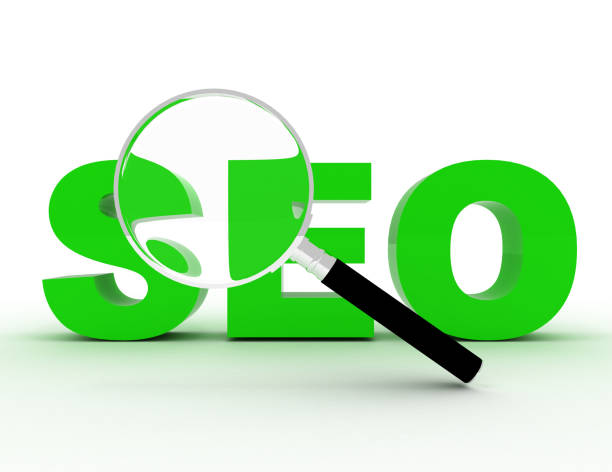
The heart of any successful on-page SEO strategy is #producing_high-quality and valuable content.
Search engines are increasingly focusing on the quality and relevance of content to user intent.
Content that meets user needs, provides accurate and comprehensive information, and answers their questions has a higher chance of ranking well in search results.
Your content should be written not just for search engines, but primarily for users.
Keyword usage should be natural, not forced and repetitive.
“Engaging content” can encourage users to interact more and increase their time spent on the page, which is a positive signal for on-page SEO.
Also, entertaining and attractive content increases the likelihood of sharing and linking to it, which indirectly helps your on-page SEO.
Continuously update your content to ensure your information remains fresh and accurate.
Search engines prefer fresh content.
For example, an old blog post about on-page SEO can become valuable again by adding new information and updating statistics.
Content formatting is also very important; using short paragraphs, lists (bullet points), images, and videos, enhances readability and improves user experience.
Deep and comprehensive content, also known as “Cornerstone Content,” should fully cover a topic and serve as a reference for other related articles.
Did you know that poor online store design can drive away up to 70% of your potential customers? Rasawweb transforms your sales with professional and user-friendly e-commerce website designs.
✅ Significant increase in sales and revenue
✅ Full optimization for search engines and mobile devices
⚡ [Get a free consultation from Rasawweb]
Optimizing Images and Videos
![]()
Alongside textual content, #optimizing_images_and_videos plays a crucial role in on-page SEO and improving user experience.
Images and videos not only enhance the visual appeal of a page but can also drive significant traffic to your site through image and video searches.
However, if not properly optimized, they can slow down page loading speed and harm your on-page SEO.
The first step in image optimization is reducing their size without compromising quality.
Tools like TinyPNG or Compressor.io can help in this regard.
Newer formats like WebP also have smaller sizes compared to JPEG and PNG, and their use is recommended.
The second important point is using Alt Text for images.
Alt Text is a description of the image that helps search engines understand the image content and is also beneficial for visually impaired users.
Alt Text should be descriptive and include a relevant keyword.
Image file names should also be meaningful and contain keywords (e.g., “on-page-seo-2024.jpg” instead of “IMG_1234.jpg”).
For videos, you can use video Sitemap files to help search engines index them more easily.
Additionally, providing a transcript or subtitles for videos not only increases accessibility but also provides more textual content for search engines, which aids your on-page SEO.
A complete explanation about each image or video can increase its value for users and search engines.
By following these tips, you can fully leverage the potential of your images and videos to improve on-page SEO.
Internal Linking and Its Importance
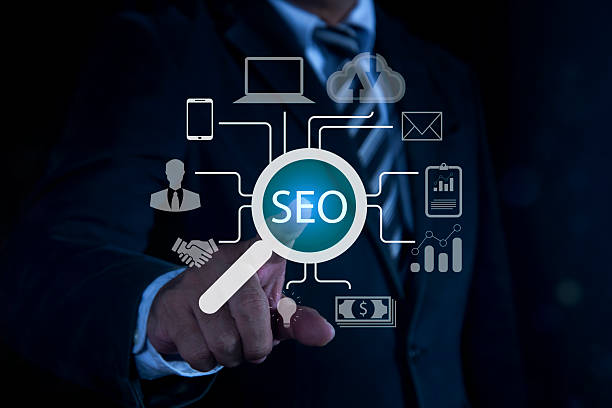
Internal linking, or #Internal_Linking, is one of the powerful tools in on-page SEO that is often overlooked.
This process involves creating links from one page on your website to another page on the same website.
Internal linking helps your on-page SEO in three major ways: Firstly, it helps search engines better understand your website’s structure and discover and index new pages.
Search engine spiders follow these links, moving from one page to another and understanding the thematic connection between them.
Secondly, it helps distribute “link juice” or ranking power throughout the website.
Pages that receive more internal links from authoritative pages will have a higher chance of ranking better.
Thirdly, it improves user experience (UX).
Internal links guide users to other relevant content, increase their time spent on the site, and reduce the bounce rate.
When creating internal links, using descriptive and relevant #Anchor_Text is crucial.
Anchor text is the text that a user clicks on, and it should clearly refer to the content of the destination page and include relevant keywords.
For example, if you are linking to a page about “on-page SEO principles,” the anchor text “on-page SEO principles” is better than “click here.”
This section provides a practical tutorial on how to properly implement internal linking.
A logical and hierarchical internal linking structure is essential for any website that prioritizes on-page SEO.
Technical On-Page SEO: Speed and User Experience
![]()
Technical on-page SEO is an aspect of on-page SEO that addresses the technical factors of your website and can significantly impact ranking and user experience.
Three vital factors in technical on-page SEO are #Site_Speed, #Mobile_Friendliness, and the use of #Secure_SSL_Protocol.
Site loading speed is one of Google’s important ranking factors.
Slow websites not only provide a poor user experience but also lead to high bounce rates.
Tools like Google PageSpeed Insights can help you identify and resolve speed issues.
Optimizing images, compressing codes (CSS, JavaScript, HTML), and using caching are among the actions that increase site speed.
Given the increasing use of mobile devices for searching, mobile-friendliness of a website is of crucial importance.
Google also follows a “Mobile-first Indexing” approach, meaning it prioritizes your site’s mobile version for indexing and ranking.
Responsive Design is the best solution to ensure your site’s compatibility with various devices.
Using the secure SSL protocol (HTTPS) not only guarantees the security of user information but is also considered a ranking factor by Google.
Browsers also warn users that websites without SSL are insecure.
These aspects require a specialized approach and follow the latest news on Google’s algorithms.
| Technical Issue | Explanation | On-Page SEO Solution |
|---|---|---|
| Slow Site Speed | Web pages take a long time to load, which diminishes user experience and increases bounce rate. | Compressing images, using caching, optimizing CSS/JS codes, using a CDN. |
| Non-Responsive | The site does not display well on mobile devices and tablets, making navigation difficult. | Implementing Responsive Web Design. |
| Lack of SSL Protocol (HTTPS) | The site does not use the secure HTTPS protocol, leading to security warnings and reduced user trust. | Installing an SSL certificate and migrating the site to HTTPS. |
| Broken Links | Links that point to non-existent pages (404 errors). | Using tools to identify and fix broken links, setting up 301 redirects. |
Using Schema Markup and Structured Data
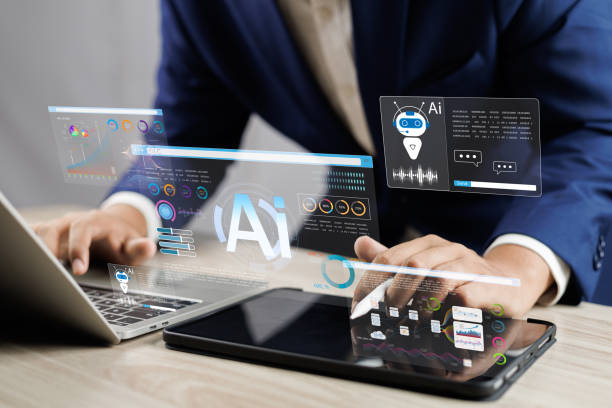
One of the most advanced techniques in on-page SEO is the use of #Schema_Markup and structured data.
Schema markup consists of codes added to your website’s HTML that help search engines understand the page’s content in more detail.
This structured data enables search engines to extract specific information from your page and display it as “Rich Snippets” in search results.
For example, you can provide information such as star ratings for products, event times, recipe instructions, business contact information, etc.
to search engines using schema.
Displaying rich snippets in search results not only increases your page’s visibility but can also significantly improve the click-through rate (CTR), even if your page’s ranking isn’t in the top positions.
Implementing schema requires specialized knowledge, but tools like Schema Markup Generator and Google’s Structured Data Testing Tool have simplified this process.
You need to know what type of schema is suitable for your content and implement it correctly.
After implementation, using analytical tools to verify its correctness is essential.
A precise analytical approach to determine which type of schema provides the most value for your content can yield significant results in your on-page SEO.
Do you dream of a thriving online store but don’t know where to start?
Rasawweb is your comprehensive e-commerce website design solution.
✅ Attractive and user-friendly design
✅ Increased sales and revenue⚡ Get a free consultation
User Experience (UX) and Its Connection to On-Page SEO
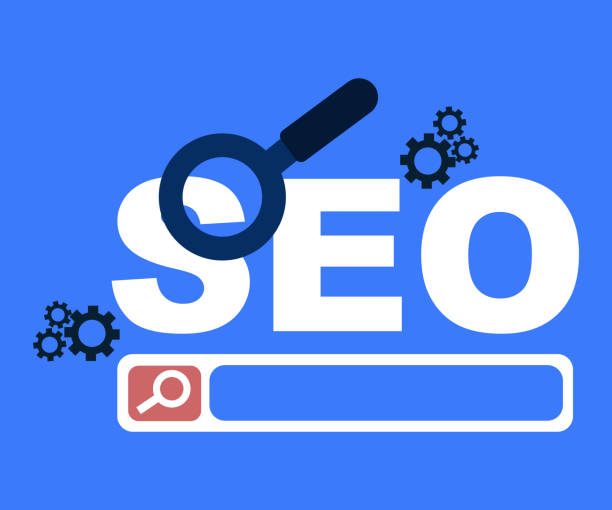
The relationship between #User_Experience (UX) and on-page SEO is very deep and inseparable.
Search engines are increasingly focusing on user satisfaction and consider metrics such as page loading speed, mobile usability, and user interaction with content as ranking signals.
If users don’t have a good experience on your website, even if your content is excellent, they will likely quickly leave the site (increasing bounce rate) or go to other search results.
These behaviors send negative signals to search engines and can harm your on-page SEO ranking.
Google’s Core Web Vitals metrics (including LCP, FID, CLS) are directly related to user experience and are important ranking factors.
For example, a page should load quickly (LCP), respond quickly to user interactions (FID), and not have sudden layout shifts (CLS).
Designing an intuitive user interface and easy navigation, ensuring high readability in content (using appropriate font, sufficient text size, and good color contrast), and providing valuable content that answers user questions, all contribute to improving user experience and, consequently, on-page SEO.
An analytical review of user behavior on your site (using tools like Google Analytics) can identify weaknesses in user experience and help you improve your on-page SEO.
Monitoring and Analyzing On-Page SEO: Continuous Improvement

On-page SEO is not a one-time process; it requires continuous #data_monitoring_and_analysis and ongoing improvement.
After performing initial optimizations, it’s essential to regularly monitor your website’s performance to measure the effectiveness of your strategies and identify potential issues.
Tools like Google Analytics and Google Search Console play a vital role in this stage.
Google Analytics allows you to monitor website traffic, user behavior (such as bounce rate, time spent on site, pages visited), and traffic sources.
Google Search Console provides valuable information about how your site appears in search results, keywords that generate traffic, crawl errors, and page indexing issues.
Periodically reviewing this data helps you diagnose technical on-page SEO problems, discover new content optimization opportunities, and understand the impact of Google algorithm updates on your site.
For instance, if you notice a sudden drop in traffic from a specific keyword, you should quickly review and optimize the relevant content.
This section serves as a guide to continuously evaluate and improve your on-page SEO performance.
Given the latest news on algorithm changes, monitoring and adapting to these changes are crucial for maintaining and improving your ranking.
This analytical and iterative approach is the key to sustained success in on-page SEO.
Frequently Asked Questions
| Question | Answer |
|---|---|
| What is On-Page SEO? | On-Page SEO refers to optimizing elements that are directly under your control and within your website. Its goal is to help search engines better understand page content and improve its ranking. |
| Why is on-page SEO important? | On-page SEO gives clear signals to search engines about page content, improves user experience, and increases the chance of attracting organic traffic. |
| What are the most important on-page SEO factors? | Keywords, Title Tag, Meta Description, URL structure, quality content, image optimization, and internal links are among the most important factors. |
| What is the role of the Title Tag in on-page SEO? | The Title Tag is one of the most important signals for search engines and users, specifying the main topic of the page. It should include the main keyword and be appealing. |
| How important is the Meta Description? | The Meta Description does not directly affect ranking, but it can improve the click-through rate (CTR) by encouraging users to click. |
| How to optimize images for on-page SEO? | By using descriptive file names, appropriate Alt Text containing keywords, compression to reduce size, and correct dimensions. |
| How do Internal Links affect SEO? | Internal links help search engines discover and index site pages, distribute authority (PageRank) across the site, and improve user navigation. |
| Is page loading speed an on-page SEO factor? | Yes, page loading speed is a critical factor in on-page SEO and user experience. Slower pages can lead to higher bounce rates and lower rankings. |
| What are the characteristics of quality content for on-page SEO? | Quality content should be comprehensive, unique, relevant, reliable, readable, and fully answer users’ needs and questions. |
| How can keywords be used in content? | Keywords should be used naturally in titles, subheadings, the first paragraph, body text, and image alt text. Avoid keyword stuffing. |
And other services of Rasawweb Advertising Agency in the field of advertising
Smart SEO: A new service to increase online growth through optimizing key pages.
Smart Marketplace: An innovative platform for improving customer acquisition with intelligent data analysis.
Smart Digital Advertising: A new service to increase user engagement through attractive UI design.
Smart Marketing Automation: An effective tool to improve SEO ranking with the help of Google Ads management.
Smart Custom Software: Transform digital branding with custom programming.
And over hundreds of other services in internet advertising, advertising consultation, and organizational solutions
Internet Advertising | Advertising Strategy | Advertorials
Sources
Comprehensive On-Page SEO Article
On-Page SEO Optimization Tips
Complete SEO Guide for Google
How to Succeed in Search Results?
? For your business’s leap in the digital world, Rasawweb Digital Marketing Agency, with years of experience in providing services such as e-commerce website design, SEO, and online advertising, paves your path to success.
📍 Tehran, Mirdamad Street, next to Bank Markazi, Kazeroun Jonoubi Alley, Ramin Alley No. 6



